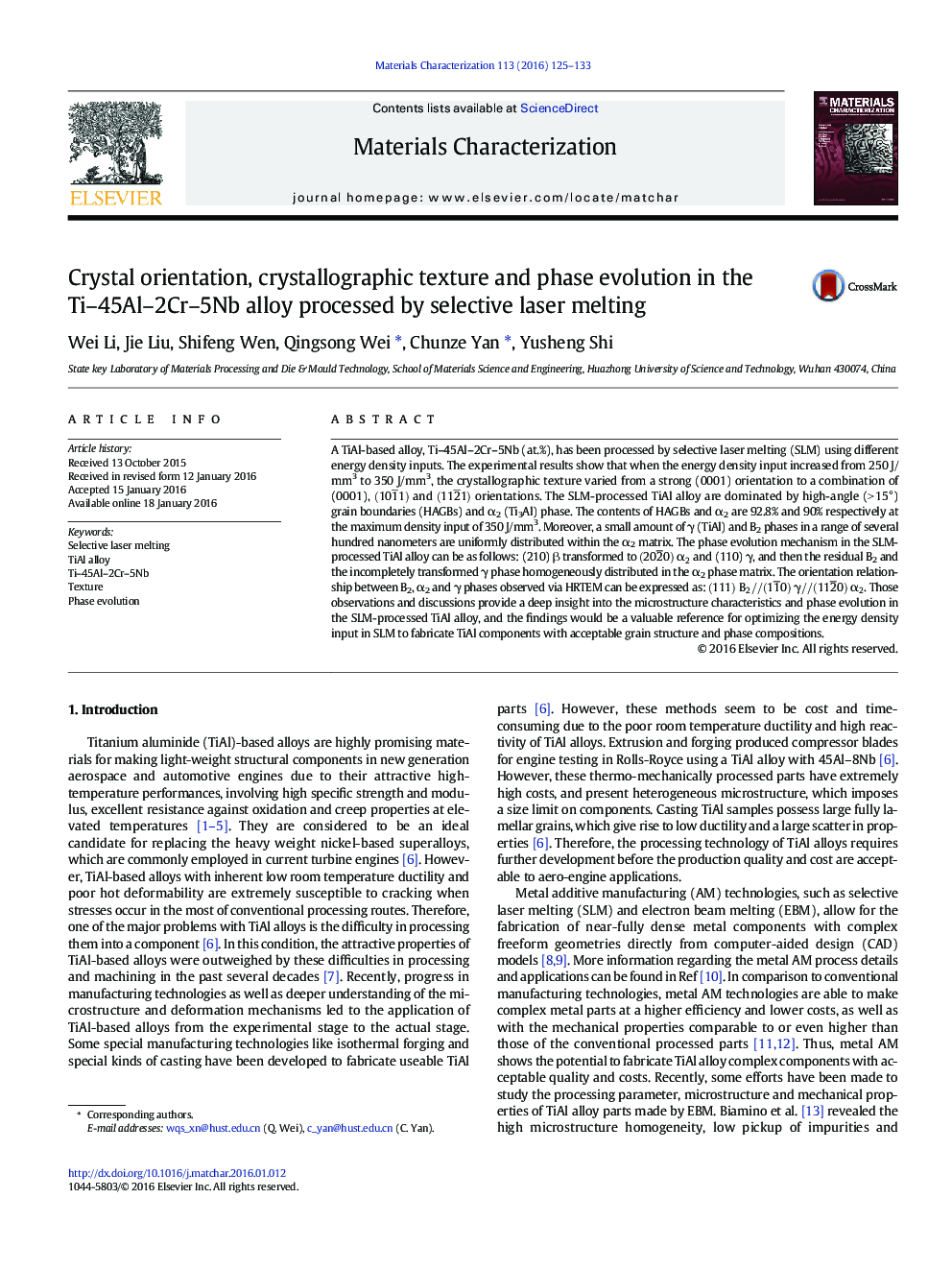| Article ID | Journal | Published Year | Pages | File Type |
|---|---|---|---|---|
| 1570747 | Materials Characterization | 2016 | 9 Pages |
•The crystal orientation and texture varied with the increased energy density input.•The contents of HAGBs and α2, γ, B2 phases were determined by EBSD.•An evolution mechanism of the α2, γ, B2 phases in SLM was discussed.•The orientation relationship between α2, γ, B2 phases were determined by HRTEM.
A TiAl-based alloy, Ti–45Al–2Cr–5Nb (at.%), has been processed by selective laser melting (SLM) using different energy density inputs. The experimental results show that when the energy density input increased from 250 J/mm3 to 350 J/mm3, the crystallographic texture varied from a strong (0001) orientation to a combination of (0001), 101̅1 and 112̅1 orientations. The SLM-processed TiAl alloy are dominated by high-angle (> 15°) grain boundaries (HAGBs) and α2 (Ti3Al) phase. The contents of HAGBs and α2 are 92.8% and 90% respectively at the maximum density input of 350 J/mm3. Moreover, a small amount of γ (TiAl) and B2 phases in a range of several hundred nanometers are uniformly distributed within the α2 matrix. The phase evolution mechanism in the SLM-processed TiAl alloy can be as follows: (210) β transformed to 202̅0α2 and (110) γ, and then the residual B2 and the incompletely transformed γ phase homogeneously distributed in the α2 phase matrix. The orientation relationship between B2, α2 and γ phases observed via HRTEM can be expressed as: 111B2//11̅0γ//112̅0α2. Those observations and discussions provide a deep insight into the microstructure characteristics and phase evolution in the SLM-processed TiAl alloy, and the findings would be a valuable reference for optimizing the energy density input in SLM to fabricate TiAl components with acceptable grain structure and phase compositions.
Graphical abstractFigure optionsDownload full-size imageDownload as PowerPoint slide
